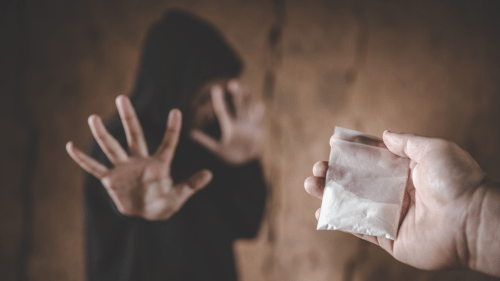How Long Does Detox Take?
Drug and alcohol detox is a critical initial step on the path to recovery from drug addiction. It is a process that involves the body ridding itself of harmful substances, a journey often accompanied by a range of withdrawal symptoms. This comprehensive guide aims to shed light on the duration of detox, the most severe withdrawal symptoms you might encounter, and the various factors that influence the detox timeline.
Whether you’re considering detox for yourself or a loved one, understanding this process is crucial for making informed decisions and ensuring a safe and effective recovery journey.

Understanding Detox
Detoxification, or detox for short, is a pivotal first step in overcoming drug addiction and alcohol addiction. It’s the body’s natural process of eliminating harmful toxins, a journey that can be challenging and uncomfortable due to withdrawal symptoms. While the detox process is crucial for starting the path to addiction recovery, it’s equally important to understand its intricacies, including the timeline and the various factors that influence how long it takes.
The Detox Process: A Symphony of Bodily Functions
Detoxification involves a complex interplay of bodily functions aimed at removing toxins from the system. The liver plays a central role, as it’s responsible for metabolizing many drugs and alcohol. The kidneys filter waste products from the bloodstream, while the skin helps eliminate toxins through sweat. Even the lungs contribute by exhaling certain substances.
The duration of drug and alcohol detox can vary considerably, ranging from a few days to several weeks or even months. This variance depends on multiple factors, including:
- Substance Type: Each substance has a unique chemical composition and metabolic pathway. Alcohol abuse, for instance, typically clears the system within days, while substances like benzodiazepines or opioids may take longer. Methamphetamine, cocaine, and heroin each have distinct detox timelines based on their half-life and withdrawal severity.
- Severity of Addiction: The more dependent an individual is on a substance, the longer detox may last. This is because chronic substance abuse can lead to physiological changes in the brain’s dopamine reward system, making withdrawal more intense and prolonged. Factors such as drug cravings, tolerance levels, and previous relapse history can influence the severity of withdrawal symptoms.
- Individual Factors: A person’s age, overall health, metabolism, genetics, and the presence of any underlying medical conditions can influence the detox timeline. Mental health disorders, such as dual diagnosis cases where addiction coexists with depression, anxiety, or PTSD, can further impact the detox experience.
-
Detox Setting: Medically supervised detox programs may offer accelerated detox options or medications to manage withdrawal symptoms, potentially shortening the duration compared to unsupervised detox. Inpatient detox provides round-the-clock medical care, while outpatient detox allows individuals to receive treatment while maintaining their daily routine.

Withdrawal Symptoms: The Uncomfortable Reality
Withdrawal symptoms are a hallmark of the detox process. These symptoms arise as the body adapts to functioning without the substance it has become dependent on. The intensity and duration of physical and psychological symptoms can vary widely, depending on drug type, addiction severity, and individual factors like genetics, metabolism, and co-occurring mental health disorders.
Physical Withdrawal Symptoms
- Nausea and vomiting
- Tremors and shaking
- Sweating
- Headaches
- Muscle aches and pains
- Fatigue
- Increased heart rate and blood pressure
- Seizures (in severe cases)
Psychological Withdrawal Symptoms
- Intense drug cravings
- Anxiety and restlessness
- Irritability and agitation
- Depression and mood swings
- Difficulty concentrating
- Insomnia
It’s important to note that withdrawal symptoms vary depending on the substance. For example:
- Alcohol withdrawal symptoms can include delirium tremens (DTs), a severe condition characterized by confusion, hallucinations, and seizures.
- Opioid withdrawal often involves flu-like symptoms, intense muscle aches, and strong cravings.
- Cocaine withdrawal symptoms typically lead to depression, fatigue, and vivid dreams.
- Benzodiazepine withdrawal can be particularly dangerous, potentially leading to severe anxiety, panic attacks, and seizures.
- Methamphetamine withdrawal often includes extreme fatigue, anxiety, and increased appetite.
The Detox Process: A Journey of Healing
The detox process typically involves three phases:
Evaluation
A thorough medical evaluation is conducted to assess the individual’s overall health, history of substance abuse, and severity of addiction. This information helps determine the most appropriate detox approach. Factors considered include:
- Polysubstance use (using multiple drugs or alcohol)
- Mental health conditions (dual diagnosis)
- Medical history (including heart disease, diabetes, or high blood pressure)
- Previous withdrawal experiences
Stabilization
During this phase, medical professionals focus on managing withdrawal symptoms, ensuring the individual’s safety and comfort. This may involve:
- Medications like methadone, Suboxone, naltrexone, benzodiazepines, or clonidine
- IV fluids and nutritional support
- Behavioral therapy to manage cravings and psychological distress
- Holistic approaches, such as yoga, meditation, or acupuncture
Transition
As withdrawal symptoms subside, the focus shifts to preparing the individual for ongoing addiction treatment. This includes:
- Counseling and behavioral therapy (Cognitive-Behavioral Therapy (CBT), Dialectical Behavior Therapy (DBT))
- Relapse prevention planning
- Education on addiction recovery
- Inpatient or outpatient rehab options
The Detox Timeline: A Closer Look at How Long Detox Takes
The detox timeline generally follows a pattern of initial symptoms, peak symptoms, and gradual tapering. However, factors such as substance type, metabolism, dosage, and duration of abuse can significantly impact this timeline.
Initial Symptoms
The first withdrawal symptoms typically appear within hours to days after the last use of the substance, depending on its half-life. These initial symptoms may be relatively mild, such as:
- Anxiety
- Restlessness
- Headaches
- Nausea
- Mild cravings
Peak Symptoms
The most intense withdrawal symptoms usually occur within a few days to a week after the last use. These symptoms vary depending on the substance but often involve a combination of physical and psychological discomfort, such as:
- Severe drug cravings
- Insomnia
- Increased heart rate
- Sweating and chills
- Irritability and agitation
- Depression
Gradual Tapering
As the body eliminates the substance and adjusts to its absence, withdrawal symptoms gradually subside. However, some individuals may experience post-acute withdrawal syndrome (PAWS), characterized by lingering psychological symptoms such as:
- Mood swings
- Anxiety
- Depression
- Insomnia
- Cognitive impairment
PAWS can last for weeks or even months, making long-term addiction treatment essential for recovery.

Medically Supervised Detox: Ensuring Safety, Comfort, and Comprehensive Support
While the idea of detoxing from drug addiction or alcohol at home might seem appealing to some, supervised detox programs offer several crucial advantages that can significantly impact the success and safety of the recovery journey. These programs provide a structured and supportive environment where individuals can navigate the challenges of withdrawal under the watchful eye of medical professionals.
Safety First: Mitigating Medical Complications
Withdrawal from certain substances, such as alcohol or benzodiazepines, can be associated with severe and potentially life-threatening medical complications. Seizures, delirium tremens (DTs), and cardiovascular issues are just a few examples of the risks involved. Medically monitored detox programs are equipped to monitor vital signs, provide immediate medical intervention in case of emergencies, and ensure the individual’s safety throughout the detox process. This is especially important for those with underlying health conditions, as withdrawal can exacerbate existing medical problems.
Comfort and Symptom Management
Withdrawal symptoms can be incredibly uncomfortable, both physically and psychologically. A medically supervised detox program can offer various medications and therapies to alleviate the discomfort associated with withdrawal. For instance, medications like buprenorphine or methadone can be used to manage opioid withdrawal symptoms, while benzodiazepines can be tapered off gradually to minimize the risk of seizures in alcohol or benzodiazepine withdrawal.
These medications, administered under the guidance of medical professionals, can significantly reduce the severity of withdrawal symptoms, making the detox process more manageable and increasing the likelihood of successful completion.
Emotional Support and Counseling
Withdrawal is not just a physical process; it also involves significant psychological and emotional challenges. Intense drug cravings, anxiety, depression, and mood swings are common during detox. Supervised detox programs provide access to mental health professionals, such as therapists and counselors, who can offer emotional support and guidance.
These professionals can help individuals develop coping mechanisms for cravings, manage anxiety and depression, and address underlying emotional issues that may contribute to drug abuse. The emotional support offered in treament programs can be instrumental in helping individuals stay motivated and committed to their recovery journey.
A Comprehensive Approach to Detox
Medically supervised programs often take a holistic approach to treatment, addressing not only the physical aspects of withdrawal but also the psychological and emotional aspects. In addition to medication and counseling, these programs may offer:
- Nutritional support to address deficiencies caused by drug abuse.
- Holistic therapies, such as yoga or meditation, to promote relaxation and reduce stress.
- Education about addiction and recovery, empowering individuals with knowledge and tools for long-term sobriety.
- Individualized treatment plans tailored to each person’s unique needs and circumstances.
Transitioning to Ongoing Addiction Treatment
While detox is a crucial first step, it’s not the end of the recovery journey. Medically supervised programs often seamlessly transition individuals into ongoing addiction treatment programs, ensuring continuity of care and support. This may involve inpatient or outpatient rehabilitation, where individuals can receive intensive therapy, counseling, and life skills training to address the root causes of addiction and build a solid foundation for a sober life.

Factors Influencing Withdrawal Severity
Several factors can influence the severity of withdrawal symptoms:
The length and intensity of substance abuse: The longer and more frequent the drug abuse, the more likely it is that withdrawal symptoms will be severe.
The specific substance(s) involved: Different substances have different withdrawal profiles. Alcohol and benzodiazepine withdrawal can be particularly dangerous due to the risk of seizures and other complications.
Co-occurring mental health conditions: Individuals with co-occurring mental health disorders, such as depression or anxiety, may experience more severe withdrawal symptoms.
Overall health: Physical health plays a role in how well the body can manage the withdrawal process.
Detox is Just the Beginning: The Path to Recovery
While detox is a crucial first step, it’s important to remember that it’s not a cure for addiction. It merely addresses the physical dependence on drugs or alcohol. Lasting recovery requires addressing the underlying causes of addiction, developing coping mechanisms, and building a strong support system.
After detox, it’s essential to engage in ongoing addiction treatment, which may include:
- Individual therapy
- Group therapy
- Medication-assisted treatment (MAT)
- Support groups
- Sober living environments
Recovery is a lifelong journey, and it’s essential to be patient, persistent, and compassionate with yourself. With the right support and treatment, you can overcome addiction and create a fulfilling life free from drug abuse. If you or someone you love is struggling with addiction, reach out for help. There are many resources available to guide you on your path to recovery.
Seeking Treatment? We Can Help!
We work with PPO Out of Network Health Insurance Policies
If you or a loved one are struggling with mental health challenges or substance abuse, reach out to Mountain Sky Recovery today. Our team of compassionate professionals is here to support your journey towards lasting well-being. Give us a call at 951-877-5868.
FAQs How Long Does Detox Take?
What are the typical withdrawal symptoms during detox?
A: Withdrawal symptoms vary but can include nausea, tremors, anxiety, and intense cravings. Severe cases may involve hallucinations or seizures.
Q: How long does detoxification usually last?
A: Detox duration depends on factors like the substance abused and individual health. It can range from a few days to several weeks.
Q: Is detox safe to do at home without medical supervision?
A: Attempting detox at home can be risky, especially for substances like alcohol or benzodiazepines, which may cause severe withdrawal symptoms. Medical supervision ensures safety and comfort.
Q: What comes after detox in addiction treatment?
A: Detox is the first step. Ongoing addiction treatment often includes therapy, medication-assisted treatment, and support groups to address the root causes of addiction.




